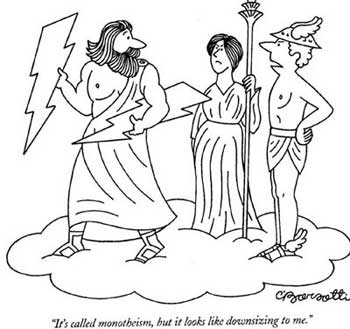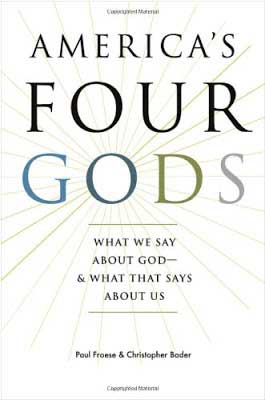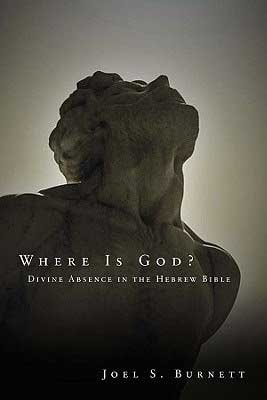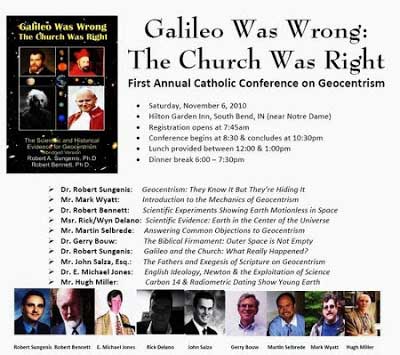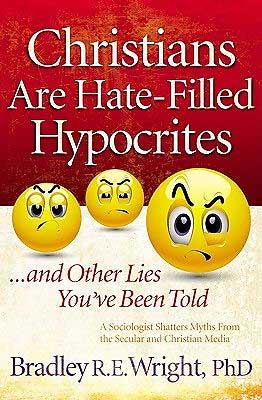
Previously in this series:
Discussion of the location of hell is not a hot topic these days. Most educated Christians have abandoned offering even the slightest defense of hellʼs classic locale (beneath the earth) even though the truth of such a belief appears to have been assumed by most people in the past, from Old Testament times (Sheol) to Inter-Testamental times, to New Testament times (Hades, Tartarus).
So it appears that after more than two thousand years, a majority of religious believers have chosen to reinterpret the Bible, in effect, to correct its authors, as well as theologians and evangelists of the past, without of course rewriting the Bible, except in their own minds.
Some argue there is no evidence that ancient Hebrews and Greeks assumed that spirits lived beneath the earth, or, they claim the Bible is totally vague concerning such matters. Others admit that the ancients did hold such an assumption and incorporated that general assumption into the Bibleʼs stories, but, they add, “The Bible is not about where hell is located, itʼs about how to get to heaven.”
But if biblical authors did take for granted spirits beneath the earth (as well as a flat earth with Godʼs heavenly abode lying directly above the earth), that leaves open the question of what other ideas the writers of the Bible took for granted concerning kingship, laws, gods, religious beliefs and sacrificial rites. How can one know such ideas are true or whether they need to be reinterpreted or at least questioned based on later knowledge? That also raises the question of whether the Scriptures can indeed “interpret themselves?” Can they?
The Well to Hell
The assumption that spirits exist beneath the earth has been around for ages. But before diving headfirst into ancient Mesopotamian writings or hardcore fundamentalist defenses of the location of hell, letʼs wade into the shallow end of the pool, and look at the story of “a well drilled into hell.” In 1989 a Christian television station mentioned that geologists in Russia had drilled the worldʼs deepest hole, then they lowered a microphone into it to “detect tectonic movements,” but instead heard “people scream.” The story spread round the world. Among those who questioned the tall tale (or deep tale), not all have abandoned hope of its redemption. Hoax or not, some still share alleged recordings of “screams from deep beneath the earth” on the internet because it plays a role in leading people to Christ, and it “might possibly be the sound of real demons.” (Of course youʼll have to judge that for yourself after listening to the recording on some of the youtube sites below.) (see NOTE #1 to read some material that debunks the Well to Hell story).
Other modern day defenders of hell boast of the “scientific accuracy” of the Bibleʼs descriptions of the nether regions. For instance they cite verses in Deuteronomy and Job that mention the earth shall be as “iron” and “fire” and claim such verses agree with modern science since the earthʼs core is mostly iron and hotter than the surface of the sun (see the first video below). They also cite Isaiahʼs words (repeated by Jesus) about a place “where the worm dieth not, and where the fire is never quenched,” and claim that science lends support to such inspired words because large worms (up to eight feet long) have been discovered in the deepest regions of the sea near thermal vents that spew forth hot sulfur [which such folks equate with “brimstone” in the Bible], and the worms have bacteria inside them that live off the toxic minerals in the water and produce food for the worms, a symbiotic relationship.(see NOTE #2).
Modern Day Videos Telling Us Where Hell Is
Next, as I said, before diving into the Mesopotamian data, or the hard line defense of hellʼs location by an inerrantist, letʼs peek at the history of the idea of hellʼs location among both Protestants and Catholics.
Protestants For Whom Hellʼs Location Was Not In Serious Doubt
Beginning with some “King James Only” inerrantists, but reaching backwards in time to famed Commentators on the Bible, including Wesley and Calvin
Dr. Peter S. Ruckman 1921-
Some scoff and say, “Where is hell?” Well, thatʼs easy. It is under your feet. “They … are gone down into hell,” Ezekiel 32:27. Hell is down under your feet, Isaiah 14:9… There is no doubt where hell is … it was in the heart of the earth where Christ went after He died. In Acts 2:31 and Acts 2:27 you are told that although Christ went through hell, He was not “left in hell.” [Theological Studies: Book Number 23, Bible Baptist Bookstore, Pensacola, 1987 p. 33. Rev. Ruckman is also founder of the Pensacola Bible Institute]
Dr. Henry Morris 1918–2006
Hell is somewhere in the heart of the earth itself. [The writers of Scripture] certainly themselves believed hell to be real and geographically beneath the earthʼs surface… So far as we can tell from Scripture, the present hell, Hades, is somewhere in the heart of the earth itself. It is also called “the pit” (Isa. 14:9, 15: Ezek. 32:18-21) and “the abyss” (Rev. 9:2)… the Biblical descriptions are quite matter of fact. The writers certainly themselves believed hell to be real and geographically beneath the earthʼs surface. [The Bible Has the Answer, p. 220. Morris founded The Institute for Creation Research, and his writings converted Ken Ham to young-earth creationism. Ham is President and CEO, Answers in Genesis–USA & the Creation Museum]
Dr. Jack Hyles 1926 - 2001
I personally believe that Hell is in the heart of the earth, [“…the Son of Man will be three days and three nights in the heart of the earth” Mat 12:40] … Scientists say that beneath the earth there is a boiling volcanic disturbance constantly going on in the heart of the earth. And so I personally believe Hell will be in the heart of the earth. [Sermon, “To Hell and Back.” Hyles was Pastor of First Baptist Church of Hammond, Indiana; and founder of Hyles-Anderson College]
Oliver B. Greene 1915-1976
There is no doubt in my mind that hell is in the center of this earth… Amos describes hell in these words: “Though they dig into hell, thence shall mine hand take them; though they climb up to Heaven, thence will I bring them down” (Amos 9:2). Certainly when we think of digging, we think of going down in the earth - we do not dig UP, we dig DOWN: we do not dig in the air, we dig in the dirt. Amos tells us as the Holy Spirit leads him to write - “Though they dig into hell, thence shall my hand take them.” Amos believed that hell is in the center of the earth… Without a shadow of a doubt, hell is in the center of this earth.” [“Where the Worm Dieth Not.” Greene was radio host of The Gospel Hour.]
M.R. De Haan 1891–1965
The Bible locates Sheol [Hell] in the heart of the earth… Jesus then descended first into the lower parts of the earth (Ephesians 4:9). But we know that Jesus upon His death went into Hades [Hell]… And Hades [Hell] was in the lower parts of the earth. [“Jonah and Christ,” The Radio Bible Class (heard around the world), 1942 pp 21-22.]
Clarence Larkin 1850 – 1924
And Jesus after His return from “The Underworld,” said “I am He that liveth, and was dead; and behold, I am alive for evermore, Amen; and have the ‘KEYS’ (of the Gates) of hell and of death.” Rev. 1:18. To get these “Keys” Jesus had to descend into the “lower parts of the earth.” Eph. 4:9 … Therefore Hades or “The Underworld,” must be in the “heart of the earth.” [The Spirit World, 1921, pp. 47-48.]
Robert Jamieson, A.R. Fausset, and David Brown
Though they dig into hell--though they hide ever so deeply in the earth. Christ, as Lord of all, took possession first of the earth the unseen world beneath it (some conjecture that the region of the lost is in the central parts of our globe), then of heaven. [Commentary Critical and Explanatory on the Whole Bible (1871), Amos 9:2 & Ephesians 4:9]
John Wesley 1703 – 1791
Hell — The center of the earth. [John Wesleyʼs Explanatory Notes, Amos 9:2. Wesley founded the Methodist Church]
John Gill 1697 – 1771
Though they dig into hell, thence shall mine hand take them, …the utmost recesses of the earth, the very centre of it. [John Gillʼs Exposition of the Entire Bible, Amos 9:2]
Isaac Watts 1674–1748
Hopeless immortals! how they scream and shiver,
While devils push them to the pit wide-yawning
Hideous and gloomy, to receive them headlong
Down to the centre!
[“Day of Judgment,” hymn]
Matthew Henry 1662–1714
Though they dig into hell, into the centre of the earth. [Commentary on the Whole Bible (1706), Amos 9:2]
John Boys, Dean of Canterbury 1571-1625
So Job calleth hell the land of darknesse, and the reason thereof is plaine, because the nethermost hell is a bottomlesse pit in the heart of the earth. [The Workes of John Boys]
John Calvin 1509–1564
Hence he says, If they dig for themselves passages to hell, that is, to the center of the earth. [Commentary on the Prophet Amos, Amos 9:2]
Catholics For Whom Hellʼs Location Was Not In Serious Doubt
Jeffrey Burton Russell 1934-
Both Hades and Gehenna were believed to be underground, and both were places of suffering. [Satan, The Early Christian Tradition, London: Cornell University Press, 1981, p. 120]
Hippolytus, circa 170-236
Hades [Hell] is a place in the created system, rude, a locality beneath the earth, in which the light of the world does not shine; and as the sun does not shine in this locality, there must necessarily be perpetual darkness there… And in this locality there is a certain place set apart by itself, a lake of unquenchable fire. [Against Plato, on the Cause of the Universe Ante-Nicene 5.222]
Tertullian, 160–230
By ourselves the lower regions (of Hades) are not supposed to be a bare cavity, nor some subterranean sewer of the world, but a vast deep space in the interior of the earth, and a concealed recess in its very bowels; inasmuch as we read that Christ in His death spent three days in the heart of the earth, that is, in the secret inner recess which is hidden in the earth, and enclosed by the earth, and superimposed on the abysmal depths which lie still lower down. [A Treatise on the Soul, Ante-Nicene Fathers Vol 3 p 231]
The Bible seems to indicate that hell is within the earth, for it describes hell as an abyss to which the wicked descend. We even read of the earth opening and of the wicked sinking down into hell (Numbers 16:31 sqq.; Psalm 54:16; Isaiah 5:14; Ezekiel 26:20; Philippians 2:10, etc.). Is this merely a metaphor to illustrate the state of separation from God?
Although God is omnipresent, He is said to dwell in heaven, because the light and grandeur of the stars and the firmament are the brightest manifestations of His infinite splendor. But the damned are utterly estranged from God; hence their abode is said to be as remote as possible from his dwelling, far from heaven above and its light, and consequently hidden away in the dark abysses of the earth. However, no cogent reason has been advanced for accepting a metaphorical interpretation in preference to the most natural meaning of the words of Scripture. Hence theologians generally accept the opinion that hell is really within the earth (see NOTE #3).
Thomas Aquinas 122?-1274
On “Whether The Fire Of Hell Is Beneath The Earth?”
“It is written (Is. 14:9): Hell below was in an uproar to meet Thee at Thy coming. Therefore the fire of hell is beneath us.
“Further, a gloss on Jonah 2:4, Thou hast cast me forth … into the heart of the sea, says, i.e. into hell, and in the Gospel (Mat. 12:40) the words in the heart of the earth have the same sense, for as the heart is in the middle of an animal, so is hell supposed to be in the middle of the earth…
In the same piece, Aquinas discusses the views of Augustine and Gregory:
“As Augustine says, ‘I am of opinion that no one knows in what part of the world hell is situated, unless the Spirit of God has revealed this to some one.’ Wherefore Gregory having been questioned on this point answers: ‘About this matter I dare not give a rash decision. For some have deemed hell to be in some part of the earthʼs surface; others think it to be beneath the earth.’ Gregory shows the latter opinion to be the more probable… Augustine too seems to indicate reasons for the congruity of hell being under the earth… Augustine [even] withdrew his [earlier] statement (Retract. ii, 29) saying: ‘Methinks I should have [simply] said that hell is beneath the earth, rather than have given the reason why it is stated or believed to be under the earth.’”
The Mesopotamian Underworld
Writings from civilizations in Mesopotamia predate the founding of the nation of Israel by thousands of years. So what did the neighbors of the ancient Hebrews have to say about the underworld? According to Wayne Horowitz, author of Mesopotamian Cosmic Geography:
The underworld is the lowest region of the universe, the home of underworld deities such as Nergal and Ereskigal, and the final resting place of deceased humans… Many texts demonstrate that the underworld was lower than the earthʼs surface… No one is ever said to ascend to the underworld, and there is no evidence for any cosmic feature below the underworld….
[The underworld is also connected, as it is in the Old Testament with waters. In Mesopotamian those waters were the] Apsu which included the waters of the water table just beneath the earthʼs surface, waters in marshes and swamps, waters in rivers, waters in the sea, and distant cosmic waters… Three passages confirm that the Apsu included a deep region of waters far below the water table…. Although no text explicitly places dead human beings in the Apsu, there is evidence that the Apsu and underworld were either confused with one another or that the Apsu itself was thought to be a netherworld inhabited by malevolent spirits.
The Anunnaki reside in the Apsu instead of the underworld in The Erra Epic: ‘I will go up to heaven and give instructions to the Igigi. I will descend to the Apsu, direct the Anunnaki. I will send the wild demons to the Earth of No Return.’ [cf. The Hebrew Book of Job].
The apparent confusion or overlap between the Apsu and the underworld is probably based on empirical observation. It is logical to place both the Apsu and the underworld directly beneath the earthʼs surface. When one digs a well, one reaches the waters of Apsu without passing through the underworld, but graves of the dead are located above the groundwaters. (The Apsu is mention in the context of excavating a grave in Adapa and Enmerkar.) Underworld rivers, such as Mesopotamian Hubur or Greek Styx, which souls must cross on their way to the underworld, probably represent the waters of the water table between graves and the realm of the dead further below. Nonetheless it is clear that there were many different conflicting views of the Apsu in antiquity, and a few authors apparently ignore the existence of the Apsu altogether. For instance Inanna and Istar reach the underworld without ever crossing the Apsu, and the lands float on a raft above the waters of the ‘sea,’ instead of the Apsu in The Bilingual Creation of the World by Marduk. [pp. 342, 343, 344, 335, 341, 348, 349]
Selections From The Place Of Hell by Terry Watkins, Th.D. Watkins only follows the King James Bible but seems adept at deflating the views of rival inerrantists, just as geocentrists are adept at pointing out to their young-earth brothers the verses that most embarrass their heliocentric view. And just as young-earth creationists are adept at pointing out to their old-earth brothers the verses that most embarrass their views. And so it goes among inerrantists. But what impressed me most about Mr. Watkins was his passion for interesting details as to how texts demonstrate that they are speaking about the location of hell, something I havenʼt seen since the early Church Fathers, that combine to make the location of hell practically undeniable to anyone who wishes to discover what the only inspired book in the cosmos has to say. Of course Mr. Watsonʼs opinion differs from mine on the Bibleʼs inspiration and he would likely write an even lengthier and more passionate article than his article on hell if he was asked to comment on what some Evangelical scholars are currently saying about the flat earth cosmology of the Bible. Be that as it may, you can read Terry Watkinsʼ entire article (from which I obtained a great number of the quotations from famous Christians with which this post begins) by clicking here. Or read my edited version below. This is all Watkins, Iʼve merely shortened it, and added two non-KJV verses, but with links to the KJV version.
The Location Of Hell
(Note: Our study on the location of hell deals with the present location of hell. The Lake of Fire described in Revelation 20:14 will replace the current place of hell.) The following verses designate the physical location of hell. The direction of hell always references down or beneath. The Bible never refers to hell in any other direction.
… let them go down quick into hell.
Psalm 55:15
Her feet go down to death; her steps take hold on hell.
Proverbs 5:5
Her house is the way to hell, going down to the chambers of death.
Proverbs 7:27
Yet thou shalt be brought down to hell, to the sides of the pit.
Isaiah 14:15
I will bring you down with those who go down to the pit to the people of old, and I will make you dwell in the lower parts of the earth, like the ancient waste places, with those who go down to the pit.
Ezekiel 26:20
… when I cast him down to hell with them that descend into the pit.
Ezekiel 31:16
They also went down into hell…
Ezekiel 31:17
The strong among the mighty shall speak to him out of the midst of hell with them that help him: they are gone down, they lie uncircumcised, slain by the sword.
Ezekiel 32:21
… which are gone down to hell.
Ezekiel 32:27
And thou, Capernaum, which art exalted unto heaven, shalt be brought down to hell.
Matthew 11:23
And thou, Capernaum, which art exalted to heaven, shalt be thrust down to hell.
Luke 10:15
For if God did not spare angels when they sinned, but cast them into hell and committed them to pits of darkness, reserved for judgment.
2 Peter 2:4
IVP New Testament Commentaries on the star in Revelation 9:2:
This star, like Wormwood, is a messenger from God, but the judgment it brings is even more terrible. It does not strike the earth or poison the waters, but with the key to the shaft of the Abyss (v. 1) opens a pit [the bottomless pit] into the very heart of the earth. From the pit, or Abyss, comes smoke like the smoke from a gigantic furnace, darkening the sun and sky.
The Bible states that after his death, Jesus descended into Hell. But his soul did not remain there, nor did his body decay. The implication is that Hell is located underground.
For as Jonas was three days and three nights in the whaleʼs belly; so shall the Son of man be three days and three nights in the heart of the earth.
Matthew 12:40
… let me freely speak unto you of the patriarch David, that he is both dead and buried … Therefore being a prophet, and knowing that God had sworn with an oath to him, that of the fruit of his loins, according to the flesh, he would raise up Christ to sit on his throne; He seeing this before spake of the resurrection of Christ, that his soul was not left in hell, neither his flesh did see corruption.
Acts 2:29-31
Say not in thine heart, Who shall ascend into heaven? (that is, to bring Christ down from above:) Or, Who shall descend into the deep? (that is, to bring up Christ again from the dead.)
Romans 10:6-7
But unto every one of us is given grace according to the measure of the gift of Christ. Wherefore he saith, When he ascended up on high, he led captivity captive, and gave gifts unto men. (Now that he ascended, what is it but that he also descended first into the lower parts of the earth?)
Ephesians 4:7-9
… Jesus Christ … died, and was buried, He descended into Hell. The third day, he rose again from the dead.
The Apostlesʼ Creed
The Bible presents many verses that emphatically locate hell in the center of the earth. And not vague verses that are open to self-interpretations, but clear and precise references. For a Christian to reject or disregard this extremely important Bible fact is inexcusable. Until the last fifty years, most Christians knew hell was a real place of fire in the center of the earth.
In the popular book, Whatever Happened to Hell?, author John Blanchard, incredibly writes:
“The Bible gives many different descriptions of hell and consistently refers to it as a specific place … As to its location, we are given no details—though perhaps there is at least one important clue… This word “outside” is the one that Jesus used frequently when speaking about hell and almost certainly lays to rest the notion that hell is located somewhere in the center of the earth. As far as its location is concerned, we have almost nothing to go on. Not even statements which say that heaven is ‘above’ and hell is ‘beneath’ tell us very much. The clearest clue we have is that hell is ‘outside’.” (Blanchard, John. What Happened to Hell?, Crossway Books Wheaton, Illinois 1995 pp. 131-132)
How can anyone who has read the Bible truthfully say, “As to its location, we are given no details…”? The answer is simple. The human psyche of mankind, even among Christians, refuses to accept the reality of hell. If they ignore the evidence long enough and loud enough, maybe it is not really there. But it is there…
As far as Blanchardʼs assertion that “the clearest clue we have is that hell is ‘outside’”—completely ignores scores and scores of clear scriptures, in favor of three “outer” references (Matthew 8:12, 22:13, 25:30). How can Blanchard write, “… Not even statements which say that heaven is ‘above’ and hell is ‘beneath’ tell us very much?” Why donʼt they? Why did God write them? Over a hundred verses describe hell as “down”; “in the heart of the earth”; “beneath”; or “lower parts of the earth” and yet that doesnʼt “tell us very much!” How can a man stand in such judgment of the Word of God by telling us Godʼs Word does “not tell us very much”? No wonder they ripped the Bible from our schools — preachers have been ripping it apart for years.
The three verses in the Bible that mention “outer darkness” plainly refer to earthly judgments during the millennium. Not hell…
Another sad case of Bible rejection occurs in Sidlow Baxterʼs The Other Side of Death. Baxter conveniently dismisses the reality that God placed hell inside the earth with feeble human logic:
“I cannot see how somewhere deep inside the physical earth could confine nonphysical, disembodied human spirits. If this revolving physical orb could imprison purely spiritual beings, then contradictorily enough it would burn them to nothingness by the intense internal fire which becomes increasingly hotter toward its center.” (Baxter, Sidlow L. The Other Side of Death, Tyndale House Wheaton, 1987 p. 187)
How can a Christian reject the scriptures with the mindless reasoning of, “I cannot see…”? Beloved, there are many amazing things the Lord says and does that humanly speaking “I cannot see.” I cannot see the innumerable stars the Lord created. I cannot see the infinite wisdom of creation. I cannot see why He loved me so much to die for my sins. But what I cannot see with these frail physical eyes, the boundless spiritual eyes of faith can clearly see in the Word of God. Does not our Lord admonish us in 2 Corinthians 5:7 to “walk by faith, not by sight”?
Mr. Baxter also writes the reckless humanistic statement that the “intense internal fire” inside this earth would “burn them to nothingness.” First of all, if hell is a literal fire (which it is) it does not matter where it is located, as pertaining to “burn them to nothingness.” To follow Baxterʼs explanation leads to the total elimination of the fire of hell.
I wonder has Mr. Baxter ever heard about Shadrach, Meshach, and Abednego of Daniel, chapter 3? These three Jewish boys were thrown alive into a furnace of literal fire that was heated seven times hotter than normal. Yet their hair was not even singed! The Bible says in Daniel 3:27, “…the fire had no power, nor was an hair of their head singed, neither were their coats changed, nor the smell of fire had passed on them.” The power of Almighty God is not limited, nor confined by the power of fire. To reject the scriptures on pathetic human rationale is disgraceful.
In Numbers 16:30-34, the Lord silences all skeptics to the location of hell. In that chapter the Bible records the rebellion and destruction of Korah. As a consequence of their rebellion, the Lord opens the earth and they go down alive into the pit of hell. This is not the grave — verse 30 says, “… the LORD make a new thing…” Thereʼs nothing “new” about “opening the earth” and going into the grave. Verse 33 also states, they “… went down alive into the pit…” Obviously, the “went down” does not refer to the shallow grave.
What could the Lord possibly write in the scriptures that He could make the location of hell any clearer? For you to reject the fact that God prepared hell inside this earth, you must intentionally ignore many plain and detailed scriptures. The evidence of the scriptures is convincing. It is conclusive. And it is real.
Endnotes
Note #1
“There are a couple of postscripts to The Well to Hell story. One is that the respected magazine, Biblical Archaeology Review, published a version of it thinking it was so outrageous that readers would get a kick out of it. Some took the article seriously, and started passing it around as substantiation, or wrote to the magazine to complain that they even mentioned it.
“Second, in August of 1990, I was contacted by the pastor of a small church in Flagstaff, Arizona, who informed me that he had proof that this story was true. Apparently, a man from his church, who was believed to be a PhD in Physics from MIT, came forward in private to claim that he was a scientist who had been on a secret mission in Russia for the past year and had met with Mikhail Gorbachev several times. He verified that the Drilling to Hell story was indeed true.
“He claimed: ‘A hole was drilled deep into the crust of the earth in Siberia and a large cavity was found. Unfortunately, news of this was leaked to the press and was distorted. It is true that a recording was made of the sounds from deep in the hole, but the intense heat destroyed the microphone in spite of special cooling material around it, so that only seventeen seconds of sounds could be captured. At the present time, scientists are drilling a second hole to confirm what was found the first time. And a better system is being developed for cooling the microphone.’
“The man went on to claim that he was helping to design this microphone and was returning to Siberia shortly to further document the phenomenon. He planned to return in about a year with more confirming information on this amazing phenomenon.
“Six months later, I got a letter from another member of the church saying that this man had turned out to be neither a graduate of MIT nor a scientist. In fact, he had skipped town with over $20,000 collected from church members who wanted to help finance his expedition.
“How did this story originate? Again, we will never really know. It is possible that somewhere in the world there has been a spooky experience during deep drilling operations. I donʼt know. According to an August 1989 article in Science magazine, there is a Russian deep hole drilling project in Kola, near Murmansk, about 150 miles north of the Arctic Circle. Another German deep drilling experiment in north-east Bavaria has discovered warmer temperatures than were expected at certain drilling levels, although nothing even close to 2,000 degrees Fahrenheit.
“Characteristic of many urban legends, this story was alleged to have occurred in an obscure part of the world where it would be virtually impossible to track down the facts. And once the story got started, people began quoting one anotherʼs newsletters to validate their own. This is the stuff of which tabloid newspapers are made.” For further information visit Snopes.com.
Note #2
Of course you donʼt have to enter the Deep nor Sheol to find worms; and Isaiah was cursing people with a punishment akin to that of a perpetually burning dump site that existed in his day. Whatʼs interesting about those who offer such “evidence” is that everything they learn gets sorted such that they recall and focus upon only what appears to “support the Bible.” Indeed, the whole cosmos revolves around whatever the Bible says, especially if one is a geocentrist. Or the whole cosmos revolves around a list of the ages of a few patriarchs if you are a young-earth creationist. And there is no scientific experiment nor observation that either a geocentrist or a young-earth creationist cannot reconstruct to suit the truth of the plain words of Scripture. The geocentrist, Dr. Gerardus Bouw, can tell you about his physics by which the cosmos circles the earth at super-luminal speeds every 24 hours. While the young-earther, Dr. Jason Lisle, has “answered” the “distant starlight question” by assuming that light travels infinitely in one direction but not in the other, and assures us that “God created galaxies in mid-collision.” So maybe we shouldnʼt be too hard on the defenders of hellʼs true location via their “sea worm” interpretation of Isaiah.
Maybe, in fact, none of us should be too hard on each other, not viciously hard. Because all of our brains function in a similar way to differing degrees, selectively noting what agrees with what we believe, disregarding other information. Also, life is short and each personʼs time for study, as well as their individual experiences, remain limited.
Ah, but we also love to exercise our brains via mental wrestling matches against those with different ideas. But one must keep in mind that each personʼs three-dimensional arrangement of a lifetime of knowledge inside them cannot possibly be conveyed to another person easily, not via the one-dimensional portals of tongue or keyboard. So the equation for a relatively interesting debate-discussion remains patience, coolness, plus time. Reading some of the same articles and books, and discussing them together also helps. But if things heat up too fast in a debate the souffle of thought will fall to its lowest level.
Note #3
But … the author of the Catholic Encyclopedia article cautions, regardless of the arguments of Catholic theologians through the ages The Church hasnʼt “officially declared” where hell is located. Even a 21st century Popeʼs recent declaration that hell is probably in some other dimension does not count as an “official” declaration. Thatʼs just the Popeʼs “Table Talk.” I think itʼs interesting how the Catholic Church functions, being the supreme interpreter of itself it makes up its own laws of interpretation as well, ignoring past statements by theologians and popes and councils, or reinterpreting them at will and focusing on other statements. And it has a LOT of statements from which to choose! More statements than are in the Bible thatʼs for sure! And think of the many ways people interpret the statements in the Bible!
To cite one example of a modern day reinterpretation, Catholic theologians in the 20th century began to argue that maybe not all unbaptized infants who died went to “Limbo,” maybe there was hope they went to heaven instead? The Pope signed an unofficial declaration of “hope” to that effect in 2007, but also noted that Limbo had not been abolished either. Now Catholic parents who suffer a miscarriage or whose infants die before being baptized can “hope” to see their children in heaven, but The Church reiterates, “we donʼt know, God hasnʼt revealed what happens to children who die unbaptized.” So all The Church has done is admit it knows a little less than it previously claimed it did about the fates of unbaptized infants. Speaking as an agnostic one can only hope The Church continues to move in the direction of admitting publicly that it knows a “little less than it thought it did” about other things as well, not just concerning the hope of a mother that she will see her formerly “Limboed” infant, but, an official admission that thereʼs “hope” for non-Catholics as well. At least some Catholic theologians in the past and present have admitted there is.
